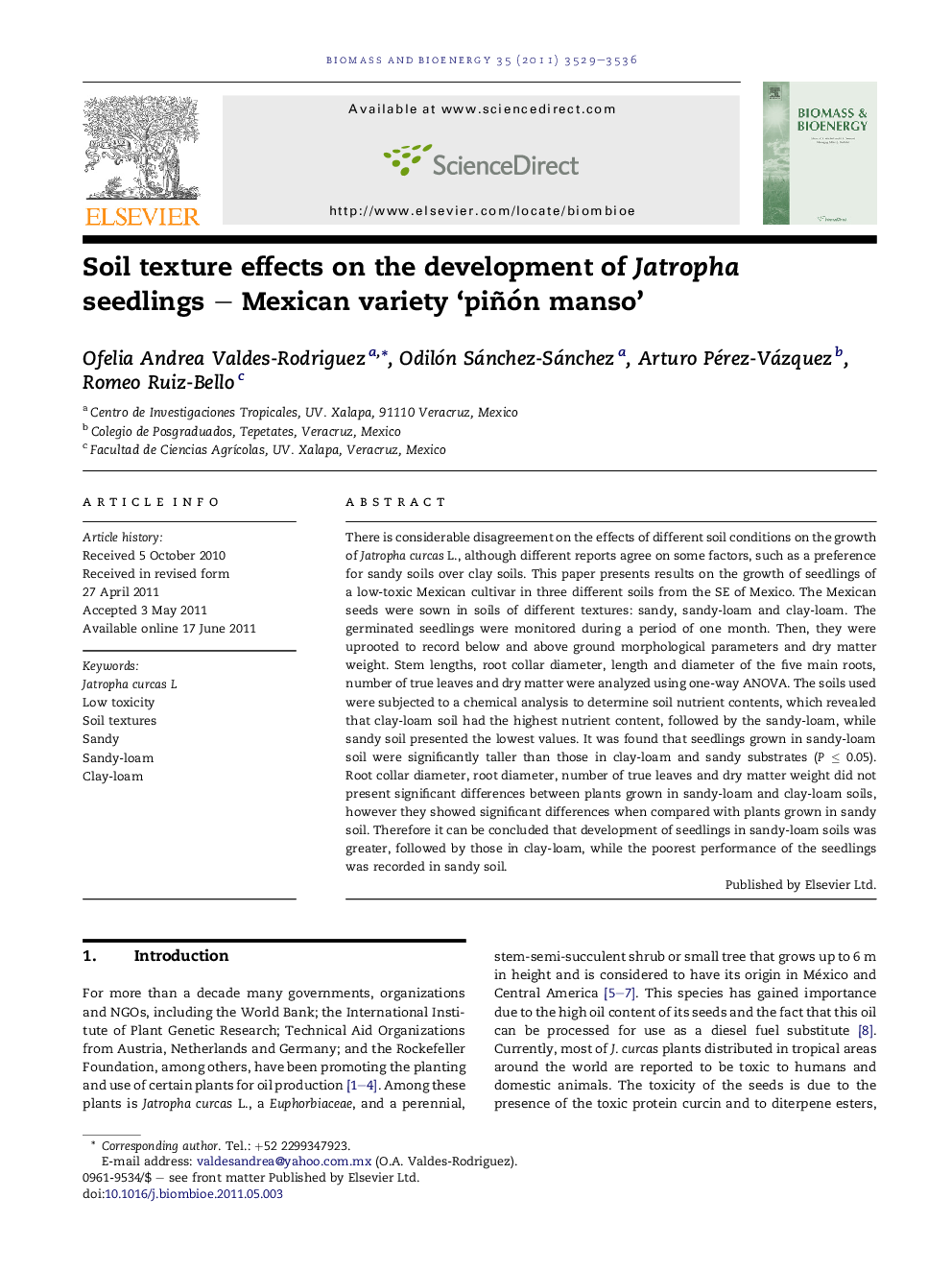| کد مقاله | کد نشریه | سال انتشار | مقاله انگلیسی | نسخه تمام متن |
|---|---|---|---|---|
| 678029 | 888628 | 2011 | 8 صفحه PDF | دانلود رایگان |

There is considerable disagreement on the effects of different soil conditions on the growth of Jatropha curcas L., although different reports agree on some factors, such as a preference for sandy soils over clay soils. This paper presents results on the growth of seedlings of a low-toxic Mexican cultivar in three different soils from the SE of Mexico. The Mexican seeds were sown in soils of different textures: sandy, sandy-loam and clay-loam. The germinated seedlings were monitored during a period of one month. Then, they were uprooted to record below and above ground morphological parameters and dry matter weight. Stem lengths, root collar diameter, length and diameter of the five main roots, number of true leaves and dry matter were analyzed using one-way ANOVA. The soils used were subjected to a chemical analysis to determine soil nutrient contents, which revealed that clay-loam soil had the highest nutrient content, followed by the sandy-loam, while sandy soil presented the lowest values. It was found that seedlings grown in sandy-loam soil were significantly taller than those in clay-loam and sandy substrates (P ≤ 0.05). Root collar diameter, root diameter, number of true leaves and dry matter weight did not present significant differences between plants grown in sandy-loam and clay-loam soils, however they showed significant differences when compared with plants grown in sandy soil. Therefore it can be concluded that development of seedlings in sandy-loam soils was greater, followed by those in clay-loam, while the poorest performance of the seedlings was recorded in sandy soil.
► Jatropha curcas Mexican varieties were grown in three different soils.
► Sandy, sandy-loam and clay-loam textures were used.
► Seedlings in sandy-loam soils showed the highest development.
► Sandy soils obtained the lowest nutrient contents.
► Therefore seedlings in sandy soils obtained the poorest performance.
Journal: Biomass and Bioenergy - Volume 35, Issue 8, August 2011, Pages 3529–3536